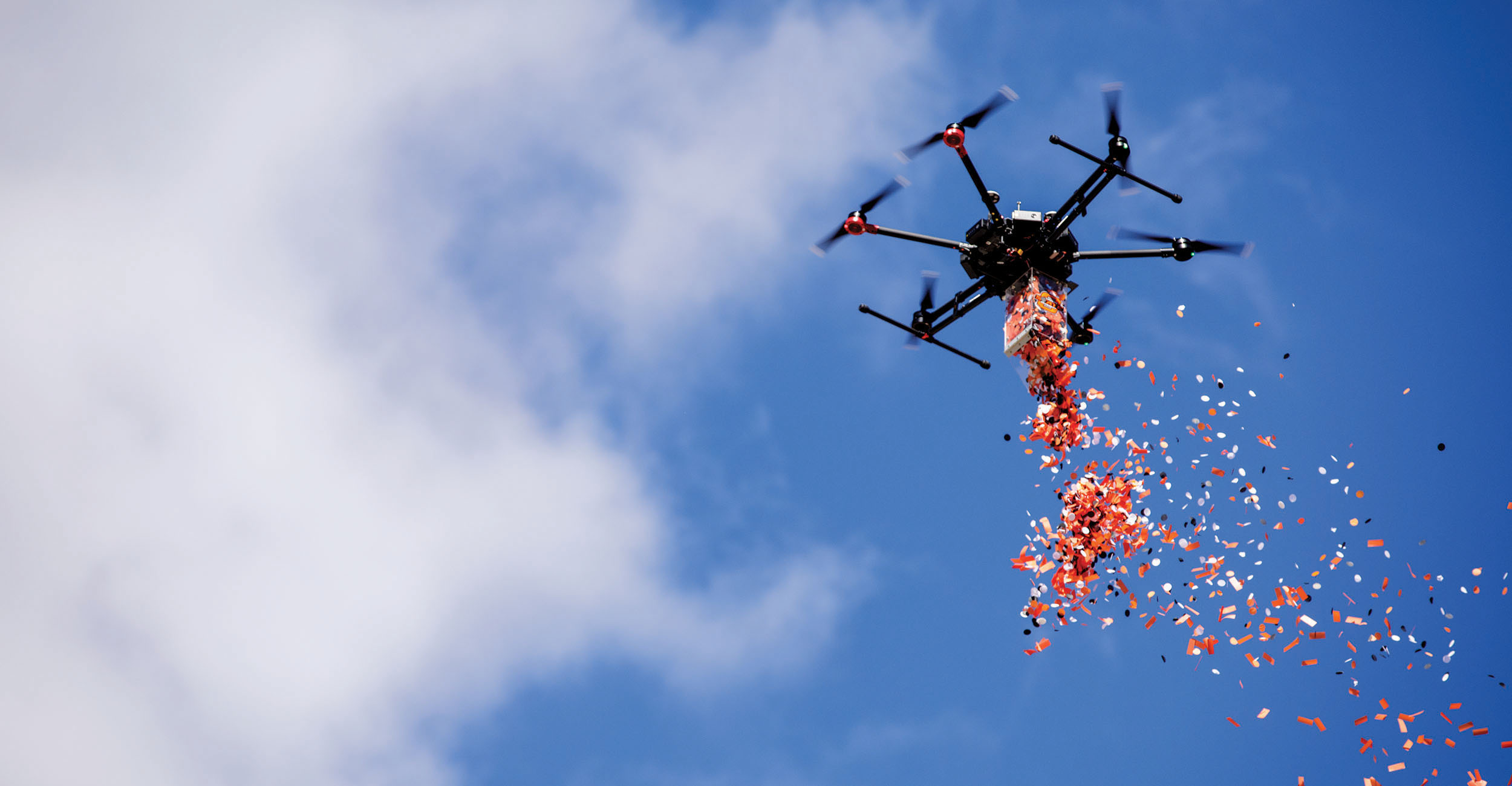
New partnership continues to grow OSU's unmanned expertise
Friday, October 21, 2022
Media Contact: Harrison Hill | Senior Research Communications Specialist | 405-744-5827 | harrison.c.hill@okstate.edu
The future of package deliveries and taxis is closer than we think and may not be
what we expect. In fact, it might be up in the air.
Part of that future might take place in Tulsa as Oklahoma State University’s Unmanned
Aircraft Systems (UAS) program continues to expand. OSU plans to work with the Tulsa
Innovation Labs (TIL) to develop a center for advanced air mobility in the city.
This center will allow them to invest in the exciting realm of unmanned aerial vehicles (UAVs), sometimes referred to as uncrewed because they operate with a computer program instead of a human pilot.
Dr. Jamey Jacob, director of the Unmanned Systems Research Institute (USRI), said the program’s recent efforts are focused on developing technologies that help OSU serve its modern land-grant mission of benefiting the public.
“The next big leap is advanced transportation, where we use similar technology that allows people to move from one place to another in an inexpensive and efficient manner — this is referred to as Urban Air Mobility (UAM),” Jacob said. “That’s the long-term trajectory of this new technology, to be able to move anything from medical supplies to people needing emergency transport and then translating this to everyday use.”
OSU has been a leader in UAV technology since USRI’s formation in 2015. As the center has grown, it has continued to work with multiple companies, as well as state and federal research agencies, to develop innovative technologies.
“It could be anything from using drones to deliver medicine or critical supplies, providing better environmental monitoring for invasive species or pollution, inspecting energy infrastructure from wind turbines to oil and natural gas wells and pipelines, observing weather for improved forecasts, or even rapid response after a natural disaster, such as a tornado, flooding or wildfire,” Jacob said.
Daniel Plaisance, leader of TIL’s Advanced Aerial Mobility programs, said OSU’s advancements in air mobility are a key element, which made them a unique partner for TIL.
“While looking around the state, we saw OSU’s UAS program as a standout in terms of potential growth,” Plaisance said. “They’re really leaders in this nationally, we hear that a lot and recognize them. OSU and the leadership team’s commitment to this is a huge asset to our state.”
TIL is a nonprofit organization backed by the George Kaiser Family Foundation. After
performing an analysis of Tulsa’s highest potential industries, it was determined
that advanced air mobility is a focus that would excel based on location and resources.
Plaisance said the goal of the lab is to spur the growth of new industries within
Tulsa and the state of Oklahoma.
“We really think it’s essential for the future health of the city and the state to invest in and partner with groups like OSU to really think about where we can attract economic activity and then develop homegrown economic activity in the state,” Plaisance said.
The partnership between TIL and USRI will develop a center focusing around this concept, which will be known as the Launchpad. The facility will be within the Helmerich Research Center on the OSU-Tulsa campus.
“That builds upon all of our expertise in developing UAS technology,” Jacob said. “We’ll be able to provide a hub for both companies and researchers and students to develop and nurture concepts at the OSU-Tulsa campus and partner with them to get these to market.”
This collaboration is also in line for a substantial federal funding opportunity. Out of 529 applicants, the center was selected in the summer of 2022 as one of 60 to submit a phase two application. This gives the program a chance to receive $75 million in funding across several areas. The team is currently waiting on the results from the phase two competition.
Both organizations also plan to work with the Osage Nation to develop a flight test facility called Skyway 36. The project is focused on building a corridor to fly beyond the visual line of sight, allowing companies and researchers to test out new technology close to home.
“The Osage Nation, of course, has been a great partner and is extremely interested in this,” Plaisance said.
Advanced air mobility is an early-stage industry and is only going to grow, Jacob said.
“Developing this center has the potential to set OSU and Oklahoma apart,” he said.
Supporting OSU’s land-grant mission continues to remain at the forefront of partnerships like these.
“This technology will eventually change everyone’s lives,” Jacob said. “Just like the introduction of the smartphone over a decade ago and the automobile over a century ago, drones will be ubiquitous and be used for activities we haven’t even considered yet. Having this seed of impactful change germinate and bloom on the Oklahoma plains should make us all proud.”
Photo By: Gary Lawson
Story By: Bailey Sisk | Research Matters Magazine
